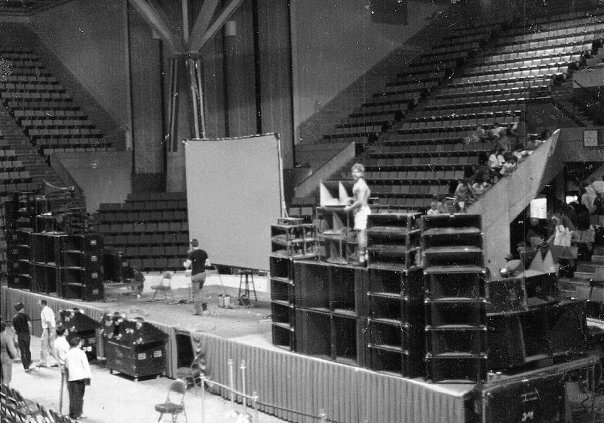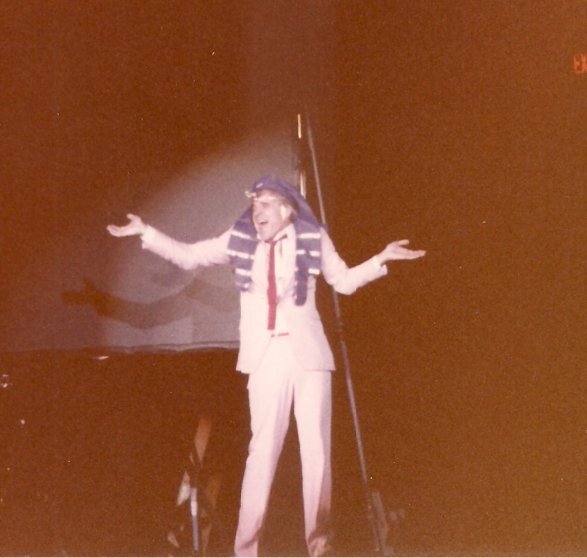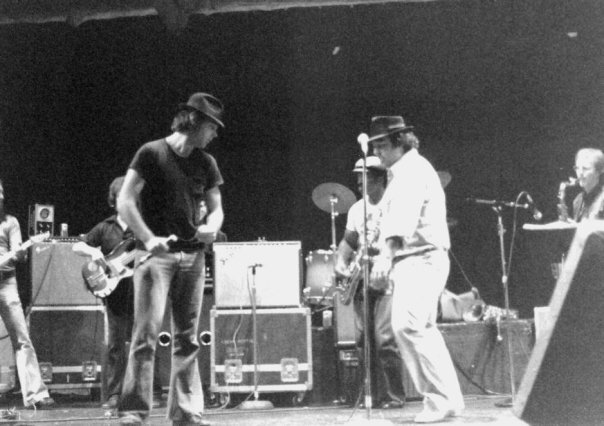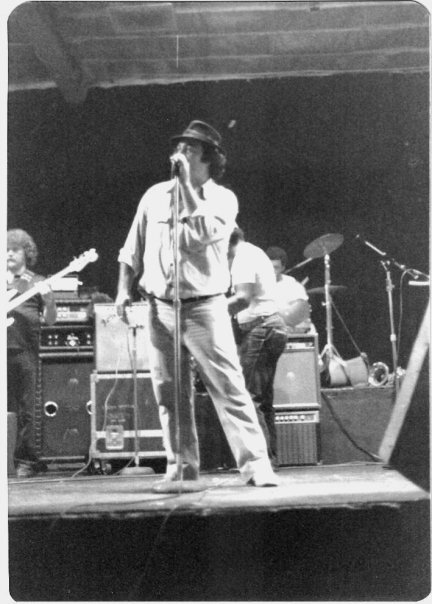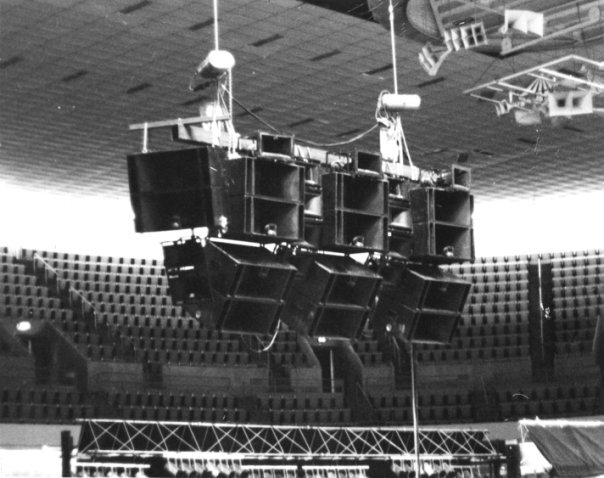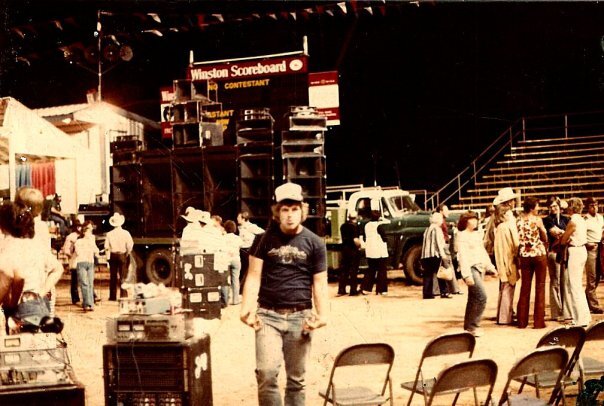Greg Carttar, 3rd St. R&D Production Services
Greg Carttar started out making amplifiers and home stereo equipment and quickly found himself providing sound for concerts. Carttar started 3rd St. R&D Production Services in 1974 and then went on to work with acts like Johnny Cash, Steve Martin, The Statler Brothers, and more. He was able to get most of his early training and support from Stanal Sound.
You can check out more of his story on ProSoundWeb
Steve Martin Tour
Blues Brothers
Steve Martin and The Blues Brothers at Universal Amphitheater in LA. This gig is where the Blues Brothers live album "briefcase Full Of Blues" was recorded. The Stanal Sound was the contract house PA in Universal Amphitheater. Also pictures from rehearsal at SIR in LA.
Johnny Cash
This is one side of our PA in a "flown" or hung configuration. This is during The Statler Brothers tour at the Greensboro, NC Coliseum in 1988 or so. This approach has been called the "flying junkyard" method, a term originally coined for another sound company's systems. In spite of the name, this method worked and sounded really really good.
The system would stack or fly equally well, and worked in exactly the same configuration, except tilted back when stacked instead of tilted "under" when flown. The cluster weighs a little over a ton.
For the techies...trim height on this gig was pretty high, because GC is a really bad echo chamber with hard tile all around the arena floor, and we were trying (successfully) to reduce or eliminate bounces from it.
This cluster used line arrays of JBL CD midrange horns (between the bass cabinet stacks) and had minimal comb filtering and great clarity. JBL "baby cheek" tweeters are mounted in the throats of the bass cabinets. I always claimed that the tweeters "rode out" on the wavefront from the bass cabinets...I don't know if anybody believes that to be a valid technical claim (nor do I care), but it worked very well, better than having them elsewhere.
The long-throws on top of the bass bins ran 2-way with the bins, and the line array horns ran 3-way with the bins and tweeters. We designed and fabricated a horn frame system to array the horns. Max power was about 350W into each woofer, 100W into each horn, and 60W into each tweeter. Crossovers @ 800hz and 5khz.
Shortly after this picture was taken, we switched from the "bumper" (a straight piece of 5" x 7" square steel tube) to grids that we bought from Stanal Sound, which made arraying the cluster much more flexible.
Various Pictures Of 3rd St. R&D
The 3rd St. R&D Production Services history, by Greg Carttar.
Originally conceived to be a builder of instrument amplifiers and high-end stereo equipment, 3rd St. R&D Production Services found itself helping a band supply a PA to the act they were opening for in 1974. That was David Loggins, and it turned into more College dates with him.
Concert audio was a sharp turn in direction, and we never looked back.
1975 brought a contract for PA at an outdoor country music park, which collapsed and very nearly took us with it.
1976 brought C.W. McCall, whose backup band was the early Mannheim Steamroller.
Sub dates for Stanal Sound took us to Red Rocks for Judy Collins, where we met Lou Robin, who managed Johnny Cash and was about to bring a new stand-up comic onto the road. On a Stanal sub-date with Tanya Tucker, we also met Mary Mitchell of Mary Mitchell Presents in Denver, and many events in Colorado resulted, many pictures here are from the Greeley, Colorado Stampede for Mary over the years.
One day in 1977 the phone rang and Lou asked if we would do Steve Martin. We had been using folded horn bass cabinets which worked for music, but which were counter to established techniques for vocal articulation...a requirement for doing a comedian in very large arenas not known for their acoustic properties. We developed a variation on the venerable Altec 816 bass cabinet which had the bass ports moved to the sides of the cabinet, and which allowed them to couple very well in stacks. A small system of these handled the first Steve Martin tours. In 1978, Steve's audiences were growing quickly in size, and we also started doing the house contracts for Tennessee State Fair, Jacksonville Florida Fair, and Ft. Myers, Florida fair.
We built a great big PA designed on classic articulation and clarity principles to provide very high clarity and coverage for Steve as he moved into acoustically challenging Arenas, and which would provide excellent coverage of very large Grandstands outdoors.
Steve continued in Arenas through 1978 and 1979, and Lou offered us Johnny Cash in 1979. The big PA was committed to several large fairs and to Steve, so we purchased the assets of Silvertrain sound, who had the same technical approach we had. In fact, we had sold them a production run of our side-port 816 cabinets for their PA. Kent Elliott of Silvertrain came on board to be lead tech for the Cash show, and brought Steve Tomek. Tomek had to leave the tour sometime later due to medical issues, and Larry "LJ" Johnson came on board. These guys are some of best, in fact in my mind, arguably THE best techs that have ever hit the road. They supported Cash for the 18 years we were out with him, until he retired in 1997.
Meanwhile back in 1980, after a successful monitor-only engagement with The Oak Ridge Boys, the big system went out with The Oaks in early 1981. Unknown to us, we had a ticking time bomb in our systems. The manufacturer of the 15" woofers we used had changed their production line and changed the glues and surround doping adhesives used on their woofers so that the glues would be dry enough at the end of the production line that they could test the speakers.
What happened was that after about a year or so, the surround dope became hard and brittle, causing the woofer cone to buzz like a kazoo at a specific frequency in the male vocal range...which happened to be right where a male gospel-style quartet spent a lot of its time. We later found out that you could take a piece of woofer surround and literally break it in half. This bomb went off during the first Oak Ridge Boys tour, and we did not discover what the problem actually was until we had lost the tour. We re-coned all 60 of our 15" woofers with adhesives and dopes from another speaker manufacturer and actually came up with a much better woofer from it, but no tour.
We continued to do fairs, festivals, and one-nighters; and the Cash show just kept on rolling.
!n 1980, we did a one-nighter at Red Rocks Amphitheater in Denver with George Thorogood for TTS and Rick Wurpel. Rick asked us to come up to a little town in Southwest Colorado called Telluride and do PA for The Telluride Jazz Festival, which at the time was a large-format show at Telluride Town Park on a weird stage with a tent top. That year, TJF had Herbie Hancock, Etta James, Spiro Gyra; and we came to love that little town.
From 1982 through 1986, some of our focus shifted to video production and satellite communications, including teleconferencing and closed-circuit event delivery.
In 1986, we hooked up with The Statler Brothers (their road manager, Marshall Grant had been Cash's bass player from the beginning of Cash) and we spent 5 years touring The Statlers in their late 80's arena show resurgence.
In 1991, after The Statlers ended, we began doing very large radio communications systems for complex events, a service segment we had been considering for some time as the size and convenience of portable radios improved and they became practical for concert use. My original technical training had been with my Dad in his Two-Way radio shop in the late 60's, but back then walkie-talkies were the size of briefcases.
When marketing that service, I remembered the little town in Southwest Colorado, and got a schedule of events. The summer of 1991 was one Telluride event after another, including Bill Grahams big show, Telluride Bluegrass, Telluride Jazz Fest, and we met a guy named Jim Bedford who was in charge of Production at Telluride Film Festival.
1991 was the first year we did communications for TFF, and that relationship has continued to this day. At TFF, we were approached to do Sundance Film Festival in 2000, and that relationship continues to this day.
One day in 2003, the phone rang and it was a project manager at The Defense Advanced Research Projects Agency of the United State Department of Defense.
DARPA was getting ready to do a robotic vehicle race in the Mojave Desert, and needed a very large communications system that would provide reliable communications over a 150 mile long operational area between Las Vegas and Barstow, California.
They had seen our website, and were actually more impressed by some of the artists we had worked with over the years than they were with the large communications systems we had on some of our Film Festivals. That led to the DARPA Grand Challenge series of Autonomous Vehicle competitions in 2004, 2005, and 2007.
Today, very large event communications systems are the main thrust of 3rd St. R & D, although we maintain our inventory of concert PA gear, and do the occasional gig.
It's been a great ride, and the road still stretches out before us.
